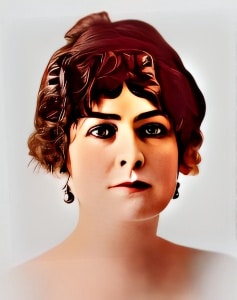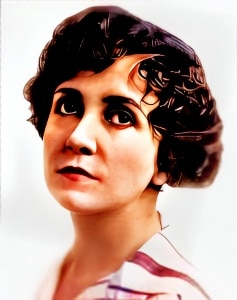 Lillian Langdon, an American actress, left an indelible mark on the early years of cinema and the theater during the silent film era.
Lillian Langdon, an American actress, left an indelible mark on the early years of cinema and the theater during the silent film era.
Born on November 11, 1876, in New York City, Langdon’s career in the entertainment industry spanned several decades. She became known for her versatile acting skills and her contribution to the development of American cinema.
Langdon’s journey into the world of entertainment began with her early experiences in the theater. She developed her craft on the stage, which provided her with a strong foundation in acting. These formative years in live theater allowed her to build her skills and explore a wide range of characters, effectively preparing her for her transition to the emerging film industry.
The silent film era, during which Lillian Langdon’s career thrived, was a time of rapid transformation in the film industry. Silent films relied heavily on visual storytelling and nonverbal acting, placing a premium on actors’ abilities to convey emotions and narratives through their expressions and physical movements. Langdon’s adeptness at adapting to this new medium and captivating audiences through her performances was a testament to her acting prowess.
One of the remarkable aspects of Langdon’s career was her collaboration with the pioneering director D.W. Griffith. She appeared in Griffith’s groundbreaking films, including “ The Birth of a Nation” (1915) and “ Intolerance” (1916). These films are celebrated for their cinematic innovations, but they have also faced ongoing controversy due to their portrayal of race and social issues.
In “ The Birth of a Nation,” Lillian Langdon played the role of Mrs. Cameron, a character central to the film’s narrative. While the film is regarded as a cinematic milestone due to its innovative techniques, it has faced enduring criticism for its racist content. Langdon’s performance, along with those of her fellow cast members, contributed to the film’s historical impact and reflected the attitudes of the era.
“ Intolerance,” another iconic work directed by Griffith, explored themes of intolerance and social injustice through parallel narratives from different historical periods. Lillian Langdon’s involvement in this film showcased her ability to engage with complex characters and emotionally charged storylines.
While Langdon’s collaborations with D.W. Griffith are among the most renowned aspects of her career, she also worked with other prominent directors and appeared in a diverse array of silent films. Her filmography included dramas, comedies, and character-driven roles, underscoring her versatility as an actress in the early years of cinema.
Lillian Langdon’s career unfolded during a period of significant transformation in the film industry. Silent films were evolving, and the demands on actors were changing. Her ability to adapt to these changes and deliver captivating performances was a testament to her dedication to her craft.
Despite the controversies surrounding some of the films in which she appeared, Lillian Langdon’s name may not be as widely recognized today as some of the leading actors of her time. The ongoing debates about the historical and cultural impact of these films have led to a reevaluation of her contributions to early cinema.
In conclusion, Lillian Langdon was an American actress whose career thrived during the silent film era. She made significant contributions to the early years of American cinema, particularly through her work with director D.W. Griffith in groundbreaking films like “ The Birth of a Nation” and “ Intolerance.” While her name may not be as widely remembered today as some of her contemporaries, her performances and versatility as an actress remain a valuable part of the rich history of early Hollywood.
Loading live eBay listings...




